Wnt/β-catenin Signaling Inhibitors suppress the Tumor-initiating properties of a CD44+CD133+ subpopulation of Caco-2 cells
- PMID: 33994850
- PMCID: PMC8120464
- DOI: 10.7150/ijbs.58612
Wnt/β-catenin Signaling Inhibitors suppress the Tumor-initiating properties of a CD44+CD133+ subpopulation of Caco-2 cells
Abstract
Tumor-initiating cells or cancer stem cells are a subset of cancer cells that have tumorigenic potential in human cancer. Although several markers have been proposed to distinguish tumor-initiating cells from colorectal cancer cells, little is known about how this subpopulation contributes to tumorigenesis. Here, we characterized a tumor-initiating cell subpopulation from Caco-2 colorectal cancer cells. Based on the findings that Caco-2 cell subpopulations express different cell surface markers, we were able to discriminate three main fractions, CD44-CD133-, CD44-CD133+, and CD44+CD133+ subsets, and characterized their biochemical and tumorigenic properties. Our results show that CD44+CD133+ cells possessed an unusual capacity to proliferate and could form tumors when transplanted into NSG mice. Additionally, primary tumors grown from CD44+CD133+ Caco-2 cells contained mixed populations of CD44+CD133+ and non-CD44+CD133+ Caco-2 cells, indicating that the full phenotypic heterogeneity of the parental Caco-2 cells was re-created. Notably, only the CD44+CD133+ subset of Caco-2-derived primary tumors had tumorigenic potential in NSG mice, and the tumor growth of CD44+CD133+ cells was faster in secondary xenografts than in primary transplants. Gene expression analysis revealed that the Wnt/β-catenin pathway was over-activated in CD44+CD133+ cells, and the growth and tumorigenic potential of this subpopulation were significantly suppressed by small-molecule Wnt/β-catenin signaling inhibitors. Our findings suggest that the CD44+CD133+ subpopulation from Caco-2 cells was highly enriched in tumorigenic cells and will be useful for investigating the mechanisms leading to human colorectal cancer development.
Keywords: CD133; CD44; Caco-2; IWR-1; Tumor-initiating cells; Tumorigenic potential; Wnt/β-catenin signaling inhibitor; XAV939.
© The author(s).
Conflict of interest statement
Competing Interests: The authors have declared that no competing interest exists.
Figures
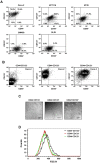
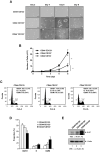
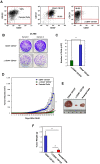
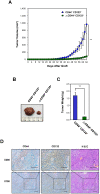
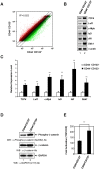
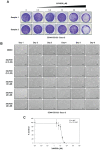
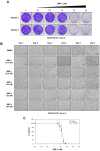
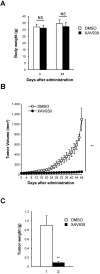
Similar articles
-
Identification of a subpopulation of long-term tumor-initiating cells in colon cancer.Biosci Rep. 2020 Aug 28;40(8):BSR20200437. doi: 10.1042/BSR20200437. Biosci Rep. 2020. PMID: 32729895 Free PMC article.
-
CD44 is functionally crucial for driving lung cancer stem cells metastasis through Wnt/β-catenin-FoxM1-Twist signaling.Mol Carcinog. 2016 Dec;55(12):1962-1973. doi: 10.1002/mc.22443. Epub 2015 Dec 1. Mol Carcinog. 2016. PMID: 26621583
-
CD49f-positive cell population efficiently enriches colon cancer-initiating cells.Int J Oncol. 2013 Aug;43(2):425-30. doi: 10.3892/ijo.2013.1955. Epub 2013 May 24. Int J Oncol. 2013. PMID: 23708747
-
The most reliable surface marker for the identification of colorectal cancer stem-like cells: A systematic review and meta-analysis.J Cell Physiol. 2019 Jun;234(6):8192-8202. doi: 10.1002/jcp.27619. Epub 2018 Oct 14. J Cell Physiol. 2019. PMID: 30317669
-
Interconnection of CD133 Stem Cell Marker with Autophagy and Apoptosis in Colorectal Cancer.Int J Mol Sci. 2024 Oct 18;25(20):11201. doi: 10.3390/ijms252011201. Int J Mol Sci. 2024. PMID: 39456981 Free PMC article. Review.
Cited by
-
The nano delivery systems and applications of mRNA.Eur J Med Chem. 2022 Jan 5;227:113910. doi: 10.1016/j.ejmech.2021.113910. Epub 2021 Oct 8. Eur J Med Chem. 2022. PMID: 34689071 Free PMC article. Review.
-
Nanotherapeutic strategies exploiting biological traits of cancer stem cells.Bioact Mater. 2025 Apr 3;50:61-94. doi: 10.1016/j.bioactmat.2025.03.016. eCollection 2025 Aug. Bioact Mater. 2025. PMID: 40242505 Free PMC article. Review.
-
Mechanisms and Strategies to Overcome Drug Resistance in Colorectal Cancer.Int J Mol Sci. 2025 Feb 25;26(5):1988. doi: 10.3390/ijms26051988. Int J Mol Sci. 2025. PMID: 40076613 Free PMC article. Review.
-
Evolutionary conservation and cancer implications of the WNT signaling pathway.Med Oncol. 2025 Aug 20;42(10):434. doi: 10.1007/s12032-025-02950-8. Med Oncol. 2025. PMID: 40833535 Review.
-
Juglone and KPT6566 Suppress the Tumorigenic Potential of CD44+CD133+ Tumor-Initiating Caco-2 Cells In Vitro and In Vivo.Front Cell Dev Biol. 2022 Mar 30;10:861045. doi: 10.3389/fcell.2022.861045. eCollection 2022. Front Cell Dev Biol. 2022. PMID: 35433695 Free PMC article.
References
-
- Siegel RL, Miller KD, Jemal A. Cancer statistics, 2020. CA Cancer J Clin. 2020;70:7–30. - PubMed
-
- Siegel RL, Miller KD, Goding Sauer A, Fedewa SA, Butterly LF, Anderson JC, Colorectal cancer statistics, 2020. CA Cancer J Clin. 2020. - PubMed
-
- Meyerhardt JA, Mayer RJ. Systemic therapy for colorectal cancer. N Engl J Med. 2005;352:476–87. - PubMed
Publication types
MeSH terms
Substances
LinkOut - more resources
Full Text Sources
Molecular Biology Databases
Research Materials
Miscellaneous

